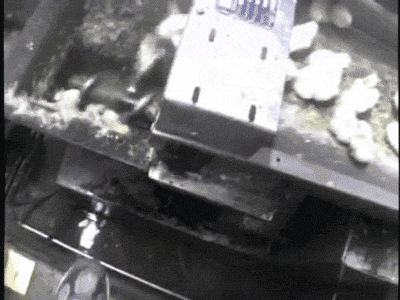Watch This Woman Rescue Chickens Moments Before Slaughter—and Try Not to Cry
Hens in the industrialized egg industry are typically shoved into tiny wire “battery” cages, which measure roughly 18 inches by 24 inches and hold up to 10 hens, each of whom has a wingspan of up to 36 inches. Even in the best-case scenario, a caged hen spends her life crowded in a space about the size of a file drawer with several other hens, unable to lift a single wing.
After about two years in these conditions, the hens’ bodies are exhausted, and their egg production drops. These “spent” hens are shipped to slaughterhouses, where their fragile legs are forced into shackles and their throats are cut. By the time they’re sent to slaughter, roughly 30 percent of them have sustained broken bones resulting from neglect, osteoporosis, and rough treatment. Their emaciated bodies are so damaged that their flesh can generally be used only for companion-animal food.
That’s when Danish activist Lina Lind Christensen steps in. As documented by a short film by the Unbound Project, traveling to egg farms, she rescues birds bound for the killing floors, saving many in what would have been their final moments. Having found homes for over 1,200 chickens once slated for slaughter, Christensen has also brought a few select survivors to her sanctuary, Free Wings, where the animals serve as “ambassadors” to the local community.
Meeting with members of the media, groups of school children, and visitors to the sanctuary, these chickens enjoy the wind in their feathers and the feeling of grass beneath their feet—sensations that were entirely alien to them during their lives of intensive confinement on farms. It’s Christensen’s hope that people who meet the rescued hens will realize that all chickens suffering to become a meal are unique individuals with their own personalities.
Hens in egg factories often have a large portion of their beaks cut off with a burning-hot blade within hours or days of birth. No painkillers are used. Birds are in pain both during and after the procedure. Chicks, who often have a hard time eating and drinking after their beaks are mutilated, can suffer from hunger and dehydration because their food and water intake is greatly reduced for several weeks after the procedure.
Male chicks are worthless to the egg industry, so every year, millions of them are suffocated or thrown into high-speed grinders, called “macerators,” while they’re still alive.

Leave eggs off your plate!
If you’re finding the reality of the egg industry hard to swallow, the quickest and kindest way to help chickens is to go vegan. Cutting eggs from your diet is easier than ever. Today, there are many delicious and humane dishes featuring vegan eggs. Check out these easy-to-find egg-free alternatives and our list of “The Most Incredible Things You Can Do With Follow Your Heart’s VeganEgg” to start making your own great meals at home.
Then, share Lina’s story with your friends, family, and social media followers. Let them know that chickens are smart, sensitive individuals who suffer greatly when abused for eggs.

